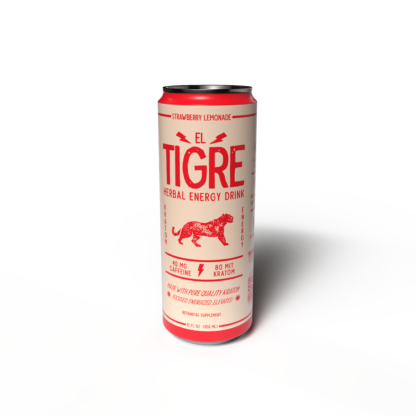What is Kratom?
Kratom, a tropical evergreen tree native to Southeast Asia, has gained popularity in recent years for its purported energizing and mood-boosting effects. Leaves from the kratom tree contain alkaloids that interact with opioid receptors in the brain, producing a range of sensations depending on the dosage.
Chemical Composition
Kratom, a tropical evergreen tree native to Southeast Asia, has gained popularity in recent years for its purported energizing and mood-boosting effects. Leaves from the kratom tree contain alkaloids that interact with opioid receptors in the brain, producing a range of sensations depending on the dosage.
The primary active alkaloids in kratom are mitragynine and 7-hydroxymitragynine.
- Mitragynine is believed to be responsible for most of kratom’s stimulating effects at lower doses.
- 7-Hydroxymitragynine contributes to the pain-relieving and sedative effects at higher doses.
Effects of Kratom
Kratom, a tropical evergreen tree native to Southeast Asia, has gained popularity in recent years for its purported energizing and mood-boosting effects. Leaves from the kratom tree contain alkaloids that interact with opioid receptors in the brain, producing a range of sensations depending on the dosage.
The primary active alkaloids in kratom are mitragynine and 7-hydroxymitragynine. Mitragynine is believed to be responsible for most of kratom’s stimulating effects at lower doses. 7-Hydroxymitragynine contributes to the pain-relieving and sedative effects at higher doses.
Kratom and Energy Drinks
The booming energy drink industry has found a new contender: Kratom. This Southeast Asian plant, known for its potential energizing and mood-enhancing effects, is now being incorporated into many beverages marketed as natural alternatives to traditional caffeine-based products. But do these Kratom energy drinks truly deliver on their promises?
Combining Ingredients
Kratom’s unique alkaloid profile, with mitragynine leading the charge in stimulating effects at lower doses, presents an intriguing possibility for enhancing energy levels. The addition of kratom to energy drinks aims to capitalize on this potential, offering a perceived natural alternative to caffeine. However, it’s crucial to remember that these drinks are relatively new and research on their long-term effects is still limited.
While some users report experiencing increased alertness, focus, and even mood elevation after consuming Kratom energy drinks, individual responses can vary widely. Factors like dosage, the specific blend of ingredients in the drink, and a person’s individual metabolism and tolerance can all influence the outcome. Moreover, combining kratom with other stimulants found in many energy drinks, such as caffeine or guarana, could potentially lead to adverse effects like anxiety, insomnia, or even heart palpitations.
Before incorporating Kratom energy drinks into your routine, it’s essential to consult with a healthcare professional. They can help you assess potential risks and benefits based on your individual health history and any medications you might be taking. Remember, while the allure of a natural energy boost is tempting, responsible consumption and informed decision-making are paramount.
Marketed Benefits
The rise of Kratom energy drinks reflects a growing consumer interest in natural alternatives to traditional caffeinated beverages.
These drinks market themselves as providing sustained energy and focus without the jitters often associated with caffeine.
Proponents suggest that Kratom’s unique alkaloids, particularly mitragynine, offer a smoother, longer-lasting boost compared to caffeine.
The combination of Kratom and other common energy drink ingredients like guarana or taurine is often touted as a powerful way to enhance performance and combat fatigue.
However, it’s important to approach these claims with a critical eye.
Scientific Evidence
Scientific evidence surrounding the effectiveness of Kratom energy drinks is still emerging. While anecdotal reports suggest potential benefits such as increased alertness and focus, rigorous scientific studies are needed to confirm these claims and understand the long-term effects of consuming Kratom in this context.
Studies on Kratom’s Effects
The use of kratom in energy drinks is a relatively recent phenomenon, and scientific research on its efficacy and safety in this context is limited. While some users report feeling energized and focused after consuming kratom energy drinks, these experiences can vary widely depending on factors like dosage, individual metabolism, and the specific blend of ingredients in the drink.
Some studies suggest that mitragynine, the primary alkaloid responsible for kratom’s stimulating effects, may improve alertness and cognitive performance at lower doses. However, higher doses can produce sedative effects, and mixing kratom with other stimulants like caffeine found in many energy drinks could lead to adverse reactions such as anxiety, insomnia, or heart palpitations.
Long-term studies on the health effects of consuming kratom regularly through energy drinks are lacking. It’s important to note that kratom is a controlled substance in some countries due to its potential for misuse and dependence. Before incorporating kratom energy drinks into your routine, it’s essential to consult with a healthcare professional to assess potential risks and benefits based on your individual health history and any medications you might be taking.

Research on Kratom and Energy
Kratom energy drinks are a relatively new product on the market, and scientific research on their efficacy and safety is still limited. While some users report feeling energized and focused after consuming these drinks, individual responses can vary widely depending on factors like dosage, individual metabolism, and the specific blend of ingredients in the drink.
Some studies suggest that mitragynine, the primary alkaloid responsible for kratom’s stimulating effects, may improve alertness and cognitive performance at lower doses. However, higher doses can produce sedative effects, and mixing kratom with other stimulants like caffeine found in many energy drinks could lead to adverse reactions such as anxiety, insomnia, or heart palpitations.
Long-term studies on the health effects of consuming kratom regularly through energy drinks are lacking. It’s important to note that kratom is a controlled substance in some countries due to its potential for misuse and dependence. Before incorporating kratom energy drinks into your routine, it’s essential to consult with a healthcare professional to assess potential risks and benefits based on your individual health history and any medications you might be taking.
Potential Risks and Side Effects
While Kratom energy drinks promise heightened alertness and focus, it’s crucial to understand the potential risks associated with their consumption. Kratom is known to interact with opioid receptors in the brain, and its effects can vary greatly depending on dosage and individual factors. Combining kratom with other stimulants often found in energy drinks could exacerbate side effects like anxiety, insomnia, or heart palpitations.
Adverse Reactions to Kratom
Potential adverse reactions to kratom include nausea, vomiting, constipation, dizziness, itching, and sweating. Higher doses can lead to more serious side effects such as drowsiness, respiratory depression (slowed breathing), and even death.
Long-term use of kratom may lead to dependence and withdrawal symptoms when use is discontinued. These symptoms can include fatigue, irritability, muscle aches, insomnia, and anxiety.
It’s important to note that kratom can interact with other medications, including opioid painkillers, antidepressants, and blood thinners. This can lead to potentially dangerous side effects.
Interactions with Other Substances
Potential adverse reactions to kratom include nausea, vomiting, constipation, dizziness, itching, and sweating. Higher doses can lead to more serious side effects such as drowsiness, respiratory depression (slowed breathing), and even death.
Long-term use of kratom may lead to dependence and withdrawal symptoms when use is discontinued. These symptoms can include fatigue, irritability, muscle aches, insomnia, and anxiety.
It’s important to note that kratom can interact with other medications, including opioid painkillers, antidepressants, and blood thinners. This can lead to potentially dangerous side effects.
Legal Status and Regulation
The use of Kratom in energy drinks is a relatively recent phenomenon, and its legal status and regulation vary significantly around the world. In some countries, kratom is completely banned, while in others, it’s legal but heavily restricted. The United States has not federally regulated kratom, leaving its legality and sale to individual states.
Kratom Legality Around the World
The use of Kratom in energy drinks is a relatively recent phenomenon, and its legal status and regulation vary significantly around the world. In some countries, kratom is completely banned, while in others, it’s legal but heavily restricted. The United States has not federally regulated kratom, leaving its legality and sale to individual states.
- North America: In the United States, kratom’s legal status is a patchwork with varying state-level laws. Some states have outright banned it, while others allow its sale and consumption with regulations. Canada also has a complex landscape regarding kratom legality, with some provinces considering bans or restrictions.
- Europe: Most European countries classify kratom as a controlled substance and restrict or ban its use. Some exceptions exist where limited access is permitted for research purposes or traditional medicinal uses.
- Asia: Kratom is native to Southeast Asia, and its legal status varies across the region. While it’s widely used in some countries for traditional medicine and cultural practices, others have implemented restrictions or bans.
- Oceania: Australia has banned kratom, while New Zealand has restricted its import and sale.
Regulatory Measures
The use of Kratom in energy drinks is a relatively recent phenomenon, and its legal status and regulation vary significantly around the world. In some countries, kratom is completely banned, while in others, it’s legal but heavily restricted. The United States has not federally regulated kratom, leaving its legality and sale to individual states.

- North America: In the United States, kratom’s legal status is a patchwork with varying state-level laws. Some states have outright banned it, while others allow its sale and consumption with regulations. Canada also has a complex landscape regarding kratom legality, with some provinces considering bans or restrictions.
- Europe: Most European countries classify kratom as a controlled substance and restrict or ban its use. Some exceptions exist where limited access is permitted for research purposes or traditional medicinal uses.
- Asia: Kratom is native to Southeast Asia, and its legal status varies across the region. While it’s widely used in some countries for traditional medicine and cultural practices, others have implemented restrictions or bans.
- Oceania: Australia has banned kratom, while New Zealand has restricted its import and sale.
Grab Kratom drink for work
Live Your Vows
Noemi Klein
- Non Surgical Butt Lift In Shepperton Surrey - May 16, 2025
- Jalupro Super Hydro Skin Booster Treatments Near Selhurst, Surrey - May 15, 2025
- Baby Botox Treatments Near Ham, Surrey - May 15, 2025

